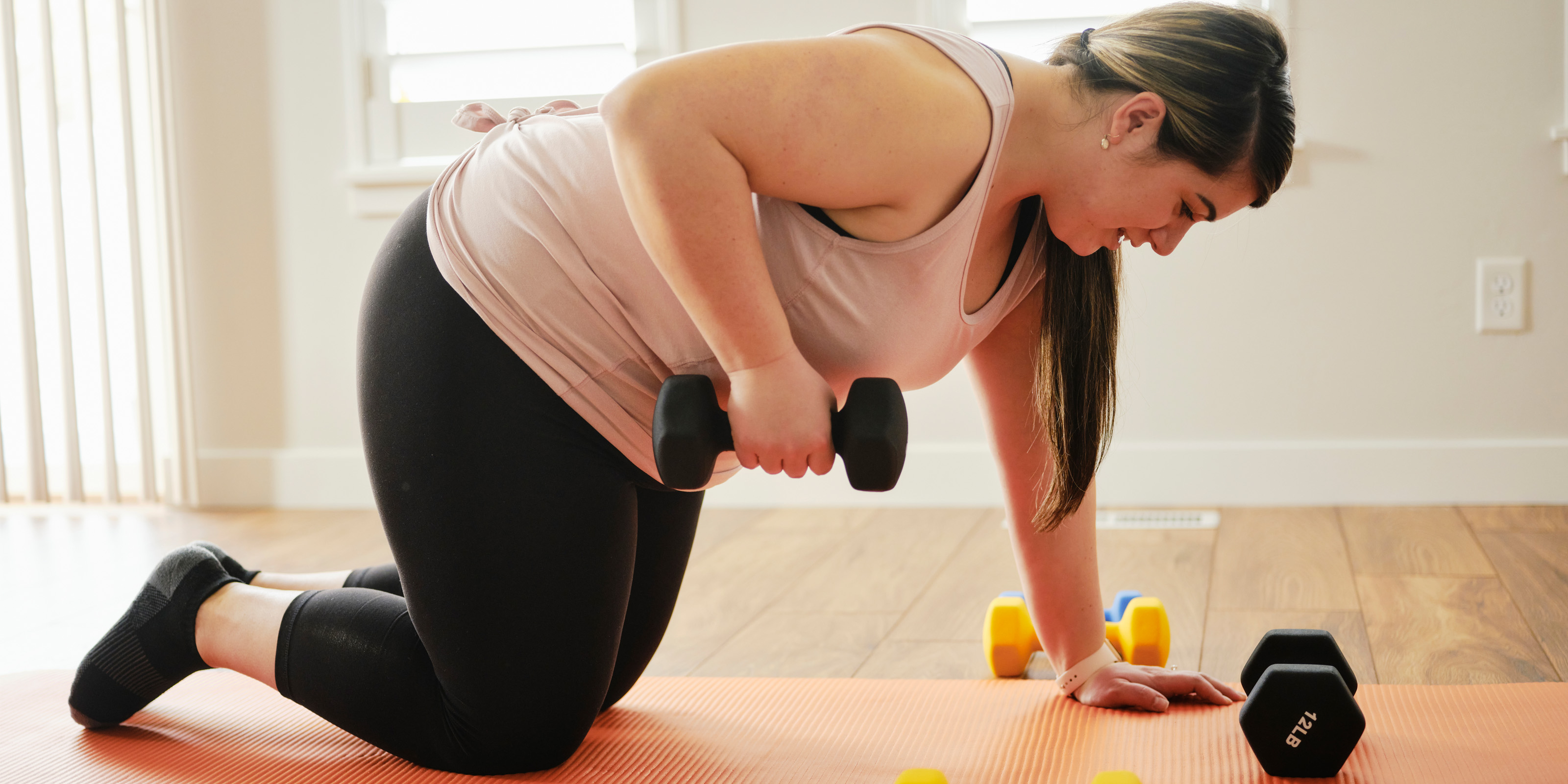Should you do cardio before or after weights?
Wondering should you do cardio before or after weights? An expert weighs in

It’s a question asked by many gym goers: should you do cardio before or after weights? According to the American College of Sports Medicine it’s important to combine both cardio and strength workouts so you don’t overwork the small muscle groups and allow time for recovery. But what order should you do them in? And what results will be seen?
Cardiovascular exercise and resistance training are two very different things. On the one hand, cardio activity, such as walking or running on one of the best treadmills is known for increasing your cardiorespiratory fitness, promoting energy expenditure and fat utilization.
Resistance training, on the other hand, such as lifting your body weight or pumping weights in the gym, is known for increasing strength, muscle mass, endurance and power. Both have different attributes, and both can be very beneficial for your overall health.
To help determine the pros and cons of combining these types of fitness and whether you should do cardio before or after weights, we asked Keith Baar, Professor of Molecular Exercise Physiology at the University of California Davis and member of the American Physiological Society for his thoughts on the subject.

Keith Baar, Ph.D., is a professor at the University of California Davis and a member of the American Physiological Society. His research explores the molecular determinants of musculoskeletal development and the role of exercise in improving health and performance.
Is it a good idea to combine cardio and weights?
According to Barr, combining cardio and weights can be a good idea. But it depends on your fitness levels, age, the intensity of your training and the outcome you are trying to achieve.
“For the average person working out less than 6 times per week, with limited high intensity training, [combining cardio and weights] is wonderful for health outcomes such as improved cardiac function,” Baar says.
“For athletes working out more than nine times a week, the answer is more complex,” Baar tells us. “We would normally separate these training sessions to squeeze an extra few percentage points in the performance of our bodies.”

According to a study published in the Journal of Applied Physiology, combining cardio and weights provides a powerful combination for weight loss success. Researchers found that for adults who are overweight, resistance training can help to increase lean mass. Aerobic training is the ‘optimal mode’ of exercise for reducing fat mass and body mass.
A systematic review published in Sports Medicine also confirmed that combining aerobic training and strength training ‘does not compromise muscle hypertrophy and maximal strength development’ for those looking to make gains.
But researchers found that explosive strength gains (which is the maximal amount of force you can produce in a minimal amount of time) may be ‘attenuated’, especially when both forms of fitness are performed in the same session.
Researchers concluded: “Practitioners [such as athletes] who prioritize explosive strength may benefit from separating aerobic and strength training to achieve optimal adaptations.”
Should you do cardio before or after weights?
No one size fits all. But if you’re looking to boost your overall fitness levels, it’s best to do cardio before weights.
“If the goal is to maximally grow both endurance and strength, then we would separate the workouts and do the endurance in the AM and the strength in the PM, usually right before dinner when we will add amino acids into the equation from dinner,” Baar explains. “Eating dinner soon after strength training can support muscle growth.”

If your goal is to increase your strength without gaining muscle mass, then you should do weights before cardio. Baar says: “This might limit muscle growth, but will increase endurance signals.”
What’s the best type of cardio to combine with weights?
Any type of cardio will have benefits. But when it comes to finding the best type to combine with weights, it will depend on your fitness goals, the intensity and duration.
Baar says: “If the goal is to increase leg muscle mass then you would look to combine what we call a motor endurance exercise (cycling) with your strength exercise. If the goal is to maximally increase heart function, then we would use a full body endurance exercise (say swimming or cross-country skiing) and high intensity intervals to recruit as much muscle as possible in our endurance and then lift the whole body afterwards.”

A study published in Sports Medicine in 2017 looked into the effect of high-intensity interval training and it found that cardio such as HIIT reduced each type of fat mass, including abdominal and visceral fat.
Researchers concluded: "High-intensity (above 90% peak heart rate) training was more successful in reducing whole-body adiposity, while lower intensities had a greater effect on changes in abdominal and visceral fat mass."
The same study also found running was more effective than cycling in reducing total and visceral fat mass. But, as with any form of fitness, it’s best to find a form of cardio you enjoy because there’s more chance you will keep it up.
How often should you train?
According to the Centers for Disease Control and Prevention’s (CDC) Physical Activity Guidelines for Americans, all adults should aim to do 150 minutes of moderate intensity cardio activity or 75 minutes of vigorous cardio activity each week.
This might sound like a lot, but if you break this down into 30-minute chunks, it means you should exercise around five to six times each week. The CDC also recommends adults should strength-train two or more days a week to ensure all major muscle groups in the body are given a workout.
Baar agrees. “It is best to do a little exercise every day,” he says. “As we get older, the stimulus from each bout of exercise lasts a shorter amount of time. As a result, to maintain our muscle size and strength we actually should do more exercise as we age.
“The problem is that we get injured more easily by unaccustomed exercise. Therefore, doing an exercise routine that hits all of the big muscle groups every couple of days is really important for strength.
“For endurance, it is really important to go faster than we want to go. Only exercising at a comfortable pace is okay, but going faster is better for heart and brain function. Therefore, the goal is around six-days-a-week.”
Sign up for the Live Science daily newsletter now
Get the world’s most fascinating discoveries delivered straight to your inbox.
Becks is a freelance journalist and writer writing for a range of titles including Stylist, The Independent and LiveScience covering lifestyle topics such as health and fitness, homes and food. She also ghostwrites for a number of Physiotherapists and Osteopaths. When she’s not reading or writing, you’ll find her in the gym, learning new techniques and perfecting her form.











